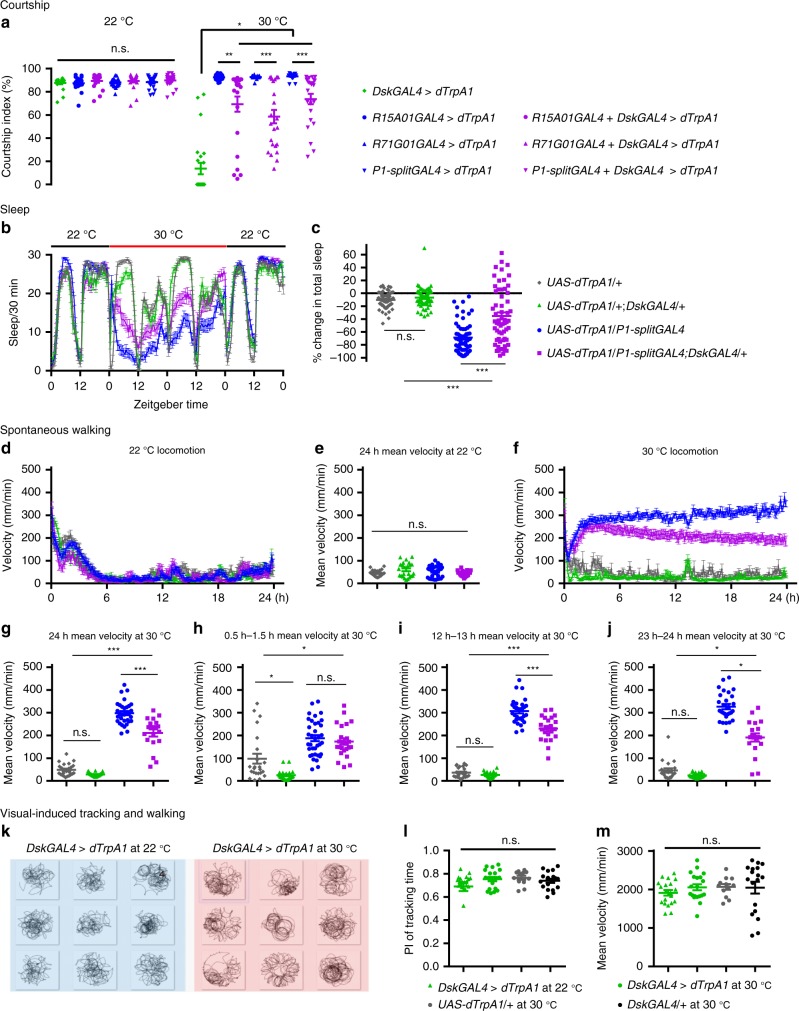Fig. 4.
Dsk and P1 neurons function antagonistically to regulate male sexual arousal. a Co-activation of Dsk and P1 neurons results in intermediate courtship levels. n = 24, 19, 17, 24, 24, 20, 24, 24, 20, 24, 24, 24, 24, and 24 respectively (from left to right). Genotypes as indicated. p < 0.05, Kruskal–Wallis test. *p < 0.05, **p < 0.01, ***p < 0.001, and p > 0.1 (n.s.) post hoc Dunn’s multiple comparisons test. b, c Dsk and P1 neurons oppositely regulate sleep. n = 60, 56, 57, and 60 respectively. p < 0.001, Kruskal–Wallis test. ***p < 0.001 and p > 0.99 (n.s.), post hoc Dunn’s multiple comparisons test. d, e Spontaneous walking velocity of individual males at permissive temperature (22 °C). n = 24, 24, 36, and 19, respectively. p = 0.07, One-way ANOVA. f–j Dsk and P1 neurons oppositely regulate spontaneous walking velocity. n = 24, 24, 32, and 19, respectively. For overall mean velocity (g): p < 0.001, One-way ANOVA. ***p < 0.001 and p > 0.1 (n.s.), post hoc Tukey’s multiple comparisons test. For mean velocity from 0.5 h to 1.5 h (h): p < 0.001, Kruskal–Wallis test. *p < 0.05 and p > 0.99 (n.s.), post hoc Dunn’s multiple comparisons test. For mean velocity from 12 h to 13 h (i): p < 0.001, One-way ANOVA. ***p < 0.001 and p > 0.1 (n.s.), post hoc Tukey’s multiple comparisons test. For mean velocity from 23 h to 24 h (j): p < 0.001, Kruskal–Wallis test. *p < 0.05 and p > 0.99 (n.s.), post hoc Dunn’s multiple comparisons test. k Representative walking trajectories in a visual-induced walking assay during a 6-min observational time. l, m Activation of Dsk neurons does not affect visual tracking ability or visual-induced walking speed. n = 20, 20, 12, and 18, respectively. For visual tracking performance: p = 0.3265, Kruskal–Wallis test; for walking speed: p = 0.3544, Kruskal–Wallis test. n.s. not significant. Error bars indicate SEM. Source data are provided as a Source Data file

